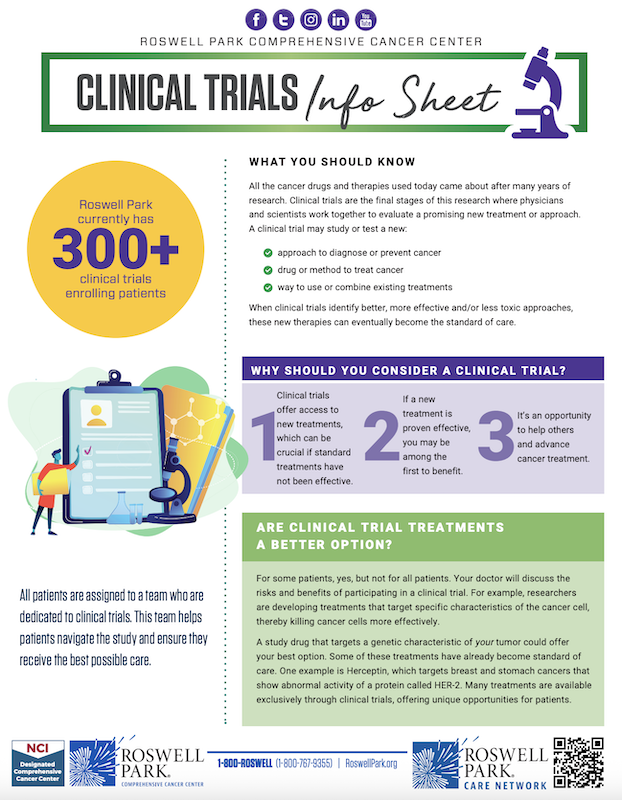Clinical trials are the final stages of cancer research that are conducted to assess how a potential new drug or therapy works in people. All drugs and treatment approaches currently used as standard of care were once studied in clinical trials. Any drug or treatment in a clinical trial has already been studied rigorously in laboratories.
Clinical trials are set up to determine a drug’s proper dose, evaluate how well it works and whether it’s more effective or less toxic than current standard treatments. Clinical trials are also conducted to evaluate:
- New agents, drugs or methods to treat cancer
- New ways to use existing treatments, such as new combinations of drugs, surgery, radiation therapy, and more
- New ways to manage side effects of other treatments
- New approaches to diagnose or prevent cancer
How clinical studies work
Most clinical studies involve the testing of a new drug. The studies progress in an orderly series of steps, called phases. This process allows researchers to ask and answer questions in a way that gives reliable results about the drug and protects the patients. Clinical trials are usually classified in three phases:
Phase 1
Phase 1 or “early phase” trials are the first step that uses a new approach or drug in humans (after it’s already been proven in laboratory studies). Phase 1 studies evaluate what dose is safe, how a new agent should be given (such as by mouth, infusion or injection) and how often. Researchers watch closely for any harmful side effects.
Phase 1 trials usually enroll a small number of patients and take place at only a few locations. The patients are divided into small groups and each group is treated with an increased dose of the new treatment or technique. The highest dose with an acceptable level of side effects is determined to be appropriate for further testing.
Phase 2
Phase 2 trials study the safety and effectiveness of a new anti-cancer agent or intervention. Some phase 2 trials may also be considered early phase clinical trials as they continue to study drug safety. Phase 2 studies usually focus on a particular type of cancer and include fewer than 100 patients.
Phase 3
Phase 3 trials compare a new agent or intervention (or new use of a standard one) with the current standard therapy. Participants are randomly assigned to the standard group or the new group, usually by a computer. This randomization helps to avoid bias and ensures that human choices or other factors do not affect the study’s results. In most cases, studies move into phase 3 testing only after they have shown promise in phases 1 and 2. Phase 3 trials may include hundreds of people at cancer centers across the country.
